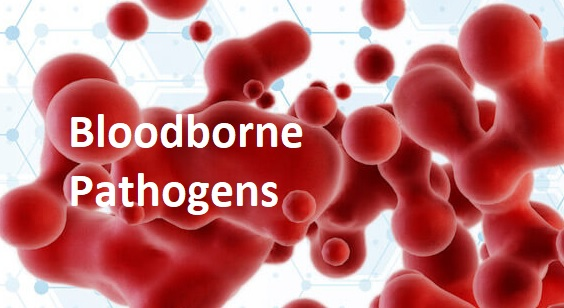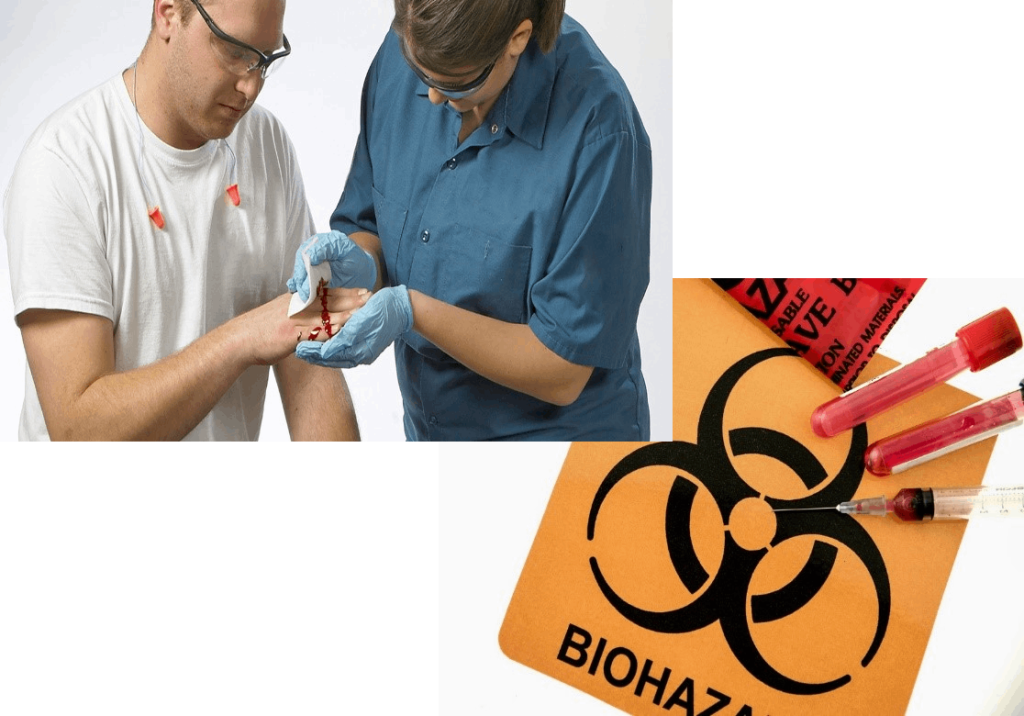Bloodborne
July 5, 2023 2024-06-12 17:34Bloodborne
Bloodborne
Topics

Course Details
Modules
Hours
Healthcare and General Industry

Introduction
Bloodborne pathogens are microorganisms that can cause diseases in humans and are transmitted through blood and other bodily fluids. According to the Centers for Disease Control and Prevention (CDC), there are approximately 600,000 needlestick and other percutaneous injuries each year among healthcare workers in the United States alone. The Occupational Safety and Health Administration (OSHA) estimates that over 5.6 million workers in healthcare and related occupations are at risk of exposure to bloodborne pathogens.
As such, it is critical for employers and employees to understand the risks associated with bloodborne pathogens and the proper procedures for preventing the spread of infection. A bloodborne pathogen course provides valuable information and training to employees who may be exposed to blood or other potentially infectious materials (OPIM) in the workplace.
This course will cover the types of bloodborne pathogens, how they are transmitted, and the potential risks associated with exposure. It will also provide information on how to prevent exposure, including proper use of personal protective equipment (PPE), proper handling and disposal of biohazardous materials, and proper hand hygiene. Additionally, the course will cover procedures for responding to exposure incidents, such as reporting and treatment options.
Through this course, employees will learn the importance of following proper procedures to prevent the spread of bloodborne pathogens in the workplace. Regular training and education on bloodborne pathogens should be provided to ensure that employees are aware of the risks and know how to prevent the spread of infection.

Course Description
This Bloodborne Pathogen (BBP) training is an essential course that focuses on providing learners with essential knowledge and skills to prevent the transmission of bloodborne diseases in the workplace. This course covers the fundamental principles of BBP, including the identification, prevention, and management of exposure incidents related to bloodborne pathogens.
Likewise, the course covers the various aspects of Occupational Safety and Health Administration (OSHA) Standard 29 CFR 1910.1030, including the definition of bloodborne pathogens, modes of transmission, and methods of prevention. Participants will also gain knowledge on the types of bloodborne pathogens, such as hepatitis B virus (HBV), hepatitis C virus (HCV), and human immunodeficiency virus (HIV), and how to control and mitigate them.
Through knowledge check questions, scenarios, and study material the course emphasizes the importance of using personal protective equipment (PPE), such as gloves and masks, when handling potentially infectious materials. Additionally, the course provides learners with strategies for managing exposure incidents, including the proper procedures for reporting and documenting incidents.
Overall, this course is ideal for anyone working in an industry that involves exposure to potentially infectious materials, such as healthcare workers, laboratory workers, and emergency responders. By completing this course, learners will be able to reduce the risk of exposure to bloodborne pathogens and ensure the safety and well-being of themselves and those around them.

Objectives
At the end of the training participants should:
- Understand the risks associated with exposure to bloodborne pathogens, including hepatitis B, hepatitis C, and HIV.
- Understand the modes of transmission of bloodborne pathogens and how to prevent exposure.
- Be able to identify workplace hazards and conditions that may lead to exposure to bloodborne pathogens.
- Understand the employer’s exposure control plan and their role in implementing it.
- Know how to use personal protective equipment (PPE) and other controls to prevent exposure to bloodborne pathogens.
- Know how to properly handle, label, and dispose of contaminated materials.
- Understand the procedures for reporting exposure incidents and seeking medical evaluation and follow-up care.
- Know how to respond in emergency situations involving bloodborne pathogens.
- Understand the hepatitis B vaccination and declination process.
- Understand the importance of confidentiality and privacy in relation to bloodborne pathogens and exposure incidents.
By achieving these objectives, employees will have the knowledge and skills necessary to prevent exposure to bloodborne pathogens and protect their health and safety in the workplace.






